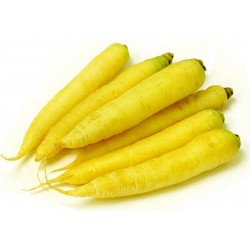Menu
-
MenuBack
- Home
-
Categories
-
-
Categories
-
Vegetable Seeds
-
Varieties by Country
- Varieties from Armenia
- Varieties from BiH
- Varieties from Croatia
- Varieties from France
- Varieties from Germany
- Varieties from Greece
- Varieties from Hungary
- Varieties from India
- Varieties from Italy
- Varieties from Japan
- Varieties from North Macedonia
- Varieties from Peru
- Varieties from Russia
- Varieties from Serbia
- Varieties from Slovenia
- Varieties from Spain
- Varieties from Thailand
- Varieties from Turkey
- Varieties from USA
- Tomato Seeds
- Corn Seeds
- Gourd family
- Bean family
- Cucumber Seeds
- Pepper Seeds
- Carrot family
- Onion family
- Lettuce Seeds
- Potato family
- Cabbage family
- Radish Seeds
- Beetroot family
- Watermelon Seeds
- Melon Seeds
- Cauliflower Seeds
- Sunflower family
-
Varieties by Country
- Fruit Seeds
- Chili - Habanero Seeds
- Medicinal Herb Seeds
- Climbing Plants Seeds
- Trees Bonsai Seeds
- Palm Seeds
- Ornamental Grasses Seeds
- Tobacco Seeds
-
Vegetable Seeds
-
-
-
-
- NEW PRODUCTS
- Create account
- Delivery - Payment
- FAQ
Last Product Reviews
Out of the two seeds, one germinated and the other one was dead and floatin...
By
 Riikka H on 07/03/2024
Riikka H on 07/03/2024
Verified Purchase
There are 130 products.
Showing 46-60 of 130 item(s)

Giant plant (with giant fruits)
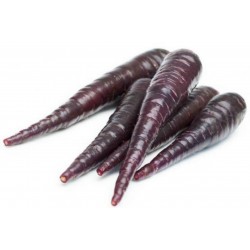
Giant Carrot Seeds Purple...
Price
€1.55
(SKU: VE 27)
Seeds Gallery EU,
5/
5
<h2><strong>Giant Carrot Seeds Purple Dragon</strong></h2>
<h2><strong><span style="color:#ff0000;">Price for Package of 20 seeds.</span></strong></h2>
<div><span style="font-size:10pt;">GIANT Fruits have weight from 500g t0 1kg. Slice it, shred it, and love it. This glorious sweet giant carrot is the richest, most intense purple. Users will delight in this unique, yet tasty, variety with its purple skin. Has a high vitamin and antioxidant level.</span></div>
VE 27 (20 S)


Giant plant (with giant fruits)

Variety from Peru
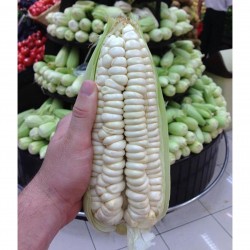
Worlds Largest Giant Corn...
Price
€2.25
(SKU: P 279)
Seeds Gallery EU,
5/
5
<!DOCTYPE html>
<html>
<head>
<meta http-equiv="Content-Type" content="text/html; charset=UTF-8" />
</head>
<body>
<h2><strong>Worlds Largest Giant Corn Seeds Cuzco</strong></h2>
<h2><span style="color: #ff0000;"><strong>Price for Package of 5 or 10 seeds.</strong></span></h2>
<p><span style="font-size: 14pt; font-family: georgia, palatino, serif; color: #000000;">Native to Peru and Ecuador Peruvian Giant Corn - also known as Choclo is a hideously large variety of corn.</span></p>
<p><span style="font-size: 14pt; font-family: georgia, palatino, serif; color: #000000;">The stalks reach up to 5 - 5,50 meters in height, a runt in a litter of this cultivar would tower over standard varieties at a whopping 4 metars.</span></p>
<p><span style="font-size: 14pt; font-family: georgia, palatino, serif; color: #000000;">In standard varieties of corn the average weight runs from 25 - 35 grams per 100 kernels In Peruvian Giant Corn the weight per 100 kernels runs from 90 - 95 grams per 100 kernels - that's nearly 3 times the size and yield.</span></p>
<p><span style="font-size: 14pt; font-family: georgia, palatino, serif; color: #000000;">It is a late maturing corn and is estimated to need 120 - 150 days to mature. They are not an easy crop to produce, it requires determination and vigilance to grow.</span></p>
<p><span style="font-size: 14pt; font-family: georgia, palatino, serif; color: #000000;">One would think being indigenous to the Andes mountainous they would be adapted to windy conditions, but this is not the case. They evolved in the Peruvian Urrabamba Valley and vicinity which is sheltered and has relatively mild weather.</span></p>
<p><span style="font-size: 14pt; font-family: georgia, palatino, serif; color: #000000;">Peruvian Giant Corn aka Choclo </span><br /><span style="font-size: 14pt; font-family: georgia, palatino, serif; color: #000000;">They do not withstand strong winds and need persistent staking, at 4 - 5,50 metars in height that's a chore and a half.</span></p>
<p><span style="font-size: 14pt; font-family: georgia, palatino, serif; color: #000000;">The plants produce numerous relatively short cobs with gigundous kernels.</span></p>
<p><span style="font-size: 14pt; font-family: georgia, palatino, serif; color: #000000;">The taste is comparable to standard sweet corn. It is not overly sweet - mild to blandly sweet with a creamy texture would be the best description. Peruvians usually boil them. In Ecuador and Bolivia they dry them first then burst or "pop" them in oil - somewhat like popcorn. We gringos can enjoy them the same as any other corn.</span></p>
<p><span style="font-size: 14pt; font-family: georgia, palatino, serif; color: #000000;">Corn Should be planted in blocks as opposed to rows and should not be planted near other varieties of Corn [See - Isolating Sweet Corn.] Cross pollination tends to produce poor tasting starchy corn. Sugar Pearl, as per some suppliers does not need to be isolated as other varieties do - this is just fine for the Sugar Pearl, but not necessarily the other variety.</span></p>
<p><span style="font-size: 14pt; font-family: georgia, palatino, serif; color: #000000;">Peruvian Giant Corn can be seeded directly into the soil, or it can also be started indoors and later transplanted. If starting indoors be sure you have a larger than standard container as it could easily outgrow the container before transplant time. Whichever you choose, Plant it in blocks, at least four rows wide, for proper pollination and well-filled ears</span></p>
<p><span style="font-size: 14pt; font-family: georgia, palatino, serif; color: #000000;">Sowing depth Aprox.: 5 cm</span><br /><span style="font-size: 14pt; font-family: georgia, palatino, serif; color: #000000;">Germination: 6 to 8 days</span><br /><span style="font-size: 14pt; font-family: georgia, palatino, serif; color: #000000;">Maturity: at 120 - 150 days.</span><br /><span style="font-size: 14pt; font-family: georgia, palatino, serif; color: #000000;">Color: White - Pale Yellow</span><br /><span style="font-size: 14pt; font-family: georgia, palatino, serif; color: #000000;">Seed Spacing: 30-35 cm apart.</span><br /><span style="font-size: 14pt; font-family: georgia, palatino, serif; color: #000000;">Row spacing: 100 cm</span><br /><span style="font-size: 14pt; font-family: georgia, palatino, serif; color: #000000;">USDA Hardiness Zones: 3- 9</span><br /><span style="font-size: 14pt; font-family: georgia, palatino, serif; color: #000000;">Plant Size: 400 - 550 cm</span><br /><span style="font-size: 14pt; font-family: georgia, palatino, serif; color: #000000;">Corn cob Size: 17-20 cm Long</span><br /><span style="font-size: 14pt; font-family: georgia, palatino, serif; color: #000000;">Full Sun</span></p>
<p><span style="font-size: 14pt; font-family: georgia, palatino, serif; color: #000000;">Above Average Yields per Sq. Footage - Anticipate 3 or more ears per Stalk.</span></p>
<p><span style="font-size: 14pt; font-family: georgia, palatino, serif; color: #000000;">Corn has shallow roots, and uses a lot of nitrogen as well as trace elements. To help your crop get off to the best start possible, prepare the soil first with a nitrogen-rich fertilizer. Well rotted manure or compost is also helpful.</span></p>
<p><span style="font-size: 14pt; font-family: georgia, palatino, serif; color: #000000;">Plant in the northern side of the garden as corn stalks will deny sunlight to the rest of your garden crops ,you also might want to grow some where it will provide shade to plants that can not tolerate full sunlight.</span></p>
<div>
<h2><a href="https://www.seeds-gallery.shop/en/home/peruvian-giant-red-sacsa-kuski-corn-seeds.html" target="_blank" title="Peruvian Giant Red Sacsa Kuski Corn Seeds, you can buy HERE" rel="noreferrer noopener"><strong>Peruvian Giant Red Sacsa Kuski Corn Seeds, you can buy HERE</strong></a></h2>
</div>
</body>
</html>
P 279 5S NS


Giant plant (with giant fruits)
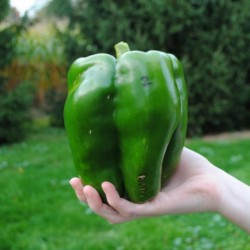
Red Giant Monster Sweet...
Price
€2.70
(SKU: PP 58)
Seeds Gallery EU,
5/
5
<h2><strong>Red Giant Monster Sweet Pepper Seeds</strong></h2>
<h2><span style="color: #ff0000;"><strong>Price for Package of 10 seeds.</strong></span></h2>
<p>Red Monster Giant is a sweet pepper that has very large and fleshy fruits. The color of the fruit goes from green to dark red (also available in yellow and orange color). The fruit Reach a weight of 300-850gr. Plants are strong and very disease resistant. It is suitable for the outdoors and greenhouse cultivation.</p>
<p>Excellent variety for fresh consumption, barbeque, and stuffing. It can be frozen very well.</p>
PP 58 R (10 S)


Giant plant (with giant fruits)

Variety from United States of America
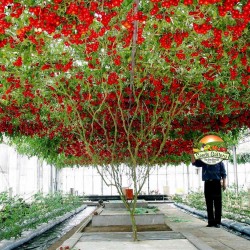
Giant Italian Tree Tomato...
Price
€2.85
(SKU: VT 6)
Seeds Gallery EU,
5/
5
<!DOCTYPE html>
<html>
<head>
<meta http-equiv="Content-Type" content="text/html; charset=UTF-8" />
</head>
<body>
<h2><strong>Giant Italian Tree Tomato seeds</strong></h2>
<h2><span style="color: #ff0000;"><strong>Price for Package of 5 seeds.<br /></strong></span></h2>
<div>The Famous Italian Tree Tomato produces large crimson tomatoes that grow as big as 6 inches across! It has meaty centers with solid divisions. It is by far the most productive tomato, often producing 3 bushels from just one plant! When grown on a trellis the vines soar 12-18 feet and often to 25 feet. Even without a trellis The Famous Italian Tree tomatoes will out-yield other varieties. 70 days from setting out plants until first fruits mature...</div>
</body>
</html>
VT 6 (5 S)


Giant plant (with giant fruits)

Variety from Armenia

Armenian Yard Long Cucumber...
Price
€3.95
(SKU: PK 25)
Seeds Gallery EU,
5/
5
<h2 class="n1ed--selected"><strong>Armenian Yard Long Cucumber Seeds</strong></h2>
<h2><span style="color: #ff0000;"><strong>Price for Package of 35 (1g) seeds.</strong></span></h2>
<p>65 days. Cucumis sativus. Plant produces good yields of 3 foot long slim light green cucumbers. Best when harvested when 12" long. This is the longest cucumber on the market. It is an excellent slicer and perfect for salads and gourmet dishes. It has a crisp mild flavor and is easy to digest. Impress your neighbors and grow a 3 foot long cucumber in your home garden! United States Department of Agriculture, NSL 65913.</p>
<p><em><strong>Disease Resistant: Mosaic Virus.<br /></strong></em></p>
<p><em><strong> </strong></em></p>
<p><em><strong>WIKIPEDIA:</strong></em></p>
<p>The <b>Armenian cucumber</b>, <b><i>Cucumis melo</i> var. <i>flexuosus</i></b>, is a type of long, slender fruit that tastes like a cucumber and looks somewhat like a cucumber inside. It is actually a variety of muskmelon (<i>C. melo</i>), a species closely related to the cucumber (<i>C. sativus</i>). It is also known as the <b>yard-long cucumber</b>, <b>snake cucumber</b>, <b>snake melon</b>, and <i>uri</i> in Japan. It should not be confused with the snake gourds (<i>Trichosanthes</i> spp.). The skin is very thin, light green, and bumpless. It has no bitterness and the fruit is almost always used without peeling. It is also sometimes called a "gutah".</p>
<div>
<ul class="gallery mw-gallery-traditional">
<li class="gallerybox">
<div>
<div class="thumb">
<div><img alt="Several Armenian cucumbers in a fabric-covered box." src="https://upload.wikimedia.org/wikipedia/commons/thumb/2/28/Armenian_cucumbers.jpeg/90px-Armenian_cucumbers.jpeg" width="90" height="120" /></div>
</div>
<div class="gallerytext">
<p>Armenian cucumbers for sale</p>
</div>
</div>
</li>
</ul>
<div id="toc" class="toc"><span class="toctext"></span></div>
<h2><span class="mw-headline" id="Description">Description</span></h2>
<p>The Armenian cucumber grows approximately 30 to 36 inches (76 to 91 cm) long. It grows equally well on the ground or on a<span> </span>trellis. Armenian cucumber plants prefer to grow in full sun for most of the day. The fruit is most flavorful when it is 12 to 15 inches (30 to 38 cm) long. Pickled Armenian cucumber is sold in Middle Eastern markets as "Pickled Wild Cucumber".</p>
<h2><span class="mw-headline" id="History">History</span></h2>
<p>Fredric Hasselquist, in his travels in<span> </span>Asia Minor,<span> </span>Egypt,<span> </span>Cyprus,<span> </span>and<span> </span>Palestine<span> </span>in the 18th century, came across the "Egyptian or hairy cucumber,<span> </span><i>Cucumis chate</i>", which is today included in the Armenian variety. It is said by Hasselquist to be the “queen of cucumbers, refreshing, sweet, solid, and wholesome.” He also states “they still form a great part of the food of the lower-class people in Egypt serving them for meat, drink, and physic.” George E. Post, in<span> </span><i>Hastings' Dictionary of the Bible</i>, states, “It is longer and more slender than the<span> </span>common cucumber, being often more than a foot long, and sometimes less than an inch thick, and pointed at both ends.”<br /><br /></p>
<div style="padding: 56.25% 0 0 0; position: relative;">
<div class="n1ed_cover" data-cke-hidden-sel="true" contenteditable="false" style="z-index: 200; left: 0px; top: 0px; width: 1371px; height: 770px;"></div>
<iframe style="position: absolute; top: 0; left: 0; width: 100%; height: 100%;" src="https://player.vimeo.com/video/567380557" frameborder="0" allow="autoplay; fullscreen; picture-in-picture" allowfullscreen="allowfullscreen" data-mce-fragment="1"></iframe></div>
<p>
<script src="https://player.vimeo.com/api/player.js"></script>
</p>
</div>
<script src="//cdn.public.n1ed.com/G3OMDFLT/widgets.js"></script>
PK 25 (1g)


Giant plant (with giant fruits)
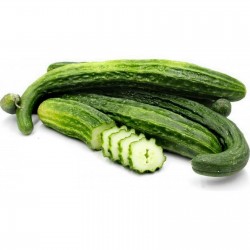
Super Long Cucumber Suyo...
Price
€2.45
(SKU: PK 5)
Seeds Gallery EU,
5/
5
<!DOCTYPE html>
<html>
<head>
<meta http-equiv="Content-Type" content="text/html; charset=UTF-8" />
</head>
<body>
<h2><strong>Cucumber seeds Suyo Long</strong></h2>
<h2><span style="color: #ff0000;"><strong>Price for Package of 10 seeds.</strong></span></h2>
<p>Cold-resistant, high productivity and excellent quality of the fruit. As the name of this Cucumber - it has a high resistance to cold. From germination to harvesting usually takes 50 to 55 days.</p>
<p>Plants can be grown in the open fields and in greenhouses. Plants are powerful and growing quite rapidly.</p>
<p>Dark green fruits straight, long, cylindrical shape. The surface of the fruit is covered with large tubercles, the skin is quite thin, the pulp is tasty and flavorful.</p>
<h3><strong>The mature form of the cucumbers grow to a length of 30 to 50 cm. </strong></h3>
<p>Grows well in the cool and shady areas of the garden.</p>
</body>
</html>
PK 5 (10 S)


Giant plant (with giant fruits)

Variety from Peru

Coming Soon
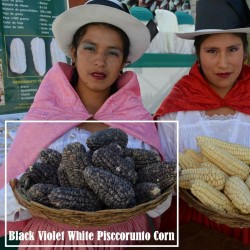
Peruvian B-V-W Giant Corn...
Price
€2.45
(SKU: P 281)
Seeds Gallery EU,
5/
5
<!DOCTYPE html>
<html>
<head>
<meta http-equiv="Content-Type" content="text/html; charset=UTF-8" />
</head>
<body>
<h2><strong>Peruvian Black Violet White Giant Corn Seeds "K'uyu Chuspi"</strong></h2>
<h2><span style="color: #ff0000;"><strong>Price for Package of 10 seeds.</strong></span></h2>
<p>"K'uyu Chuspi" Corn has a softer shell and interior, and for this reason, is most widely used as a toasted (cancha).</p>
<p>This unusual Giant kernel corn is grown for popping. The robust kernels explode when heated Having not enough force to jump out of the pot. Unlike the popcorn that most of us are used to, "K'uyu Chuspi" corn does not “pop” all the way, instead, the heart stays meaty and “puffy” with a nice toasted flavor. Being from the Andes, this is surely another long season corn that is most adapted to short daylengths.</p>
<p>"K'uyu Chuspi" corn is a native variety of Peru and the provinces of Jujuy and Salta, in North-western Argentina. Its spikes are oval to conical in shape, with numerous rows of 18 to 24 kernels each. The grains are long, narrow, containing starch in the heel and dextrin or sugar at the apex and becoming wrinkled when mature. </p>
<p>"K'uyu Chuspi" corn is still produced in its native area by farmers of pre-Hispanic origin, who traditionally use it as a food reserve for the winter. Its roasted grains are eaten as they are or together with goat cheese, another product of the region. In addition, it can also be transformed into a typical breakfast drink. Finally, its green ears, called ‘choclos’, can be occasionally consumed boiled in water or roasted, their taste being sweeter than the mature ones as they feature a higher sugar content.</p>
</body>
</html>
P 281 10-S NS


Giant plant (with giant fruits)

Variety from Peru
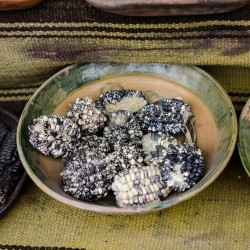
Peruvian Black and White...
Price
€2.45
(SKU: VE 70 BW (4g))
Seeds Gallery EU,
5/
5
<h2><strong>Peruvian Black and White Chulpe Corn Seeds</strong></h2>
<h2><span style="color: #fd0202;" class=""><strong>Price for Package of 10 (4g) seeds.</strong></span></h2>
<p><span>Chullpi-Maiz Chullpi has a softer shell and interior, and for this reason is most widely used as a toasted (cancha).</span></p>
<p><span>This unusual large kernel corn is grown for popping. The robust kernels explode when heated Having enough force to jump out of the pot. Unlike the popcorn that most of us are used to, Chullpi corn does not “pop” all the way, instead the heart stays meaty and “puffy” with a nice toasted flavor. Being from the Andes, this is surely another long season corn that is most adapted to short daylengths.</span></p>
<p><span>Chullpi maize is a native variety of Peru and the provinces of Jujuy and Salta, in North-western Argentina. Its spikes are oval to conical in shape, with numerous rows of 18 to 24 kernels each. The grains are long, narrow, containing starch in the heel and dextrin or sugar at the apex and becoming wrinkled when mature.Chullpi maize is still produced in its native area by farmers of pre-Hispanic origin, who traditionally use it as a food reserve for the winter. Its roasted grains are eaten as they are or together with goat cheese, another product of the region. In addition, it can also be transformed into a typical breakfast drink. Finally, its green ears, called ‘choclos’, can be occasionally consumed boiled in water or roasted, their taste being sweeter than the mature ones as they feature a higher sugar content. The survival of the Chullpi variety is now severely endangered, as on the one hand it requires particular weather conditions for its growth and on the other it suffers from the competition of other commercial sweet corn varieties, which are both sold frozen in the cobs and shelled in cans. This caused its cultivation to plunge, and it is today rare to see it exchanged with other products.</span></p><script src="//cdn.public.n1ed.com/G3OMDFLT/widgets.js"></script>
VE 70 BW (4g)


Giant plant (with giant fruits)

Variety from Peru
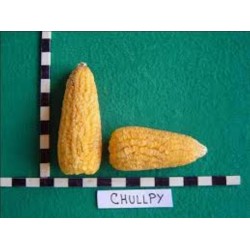
Peruvian Yellow Chulpe Corn...
Price
€2.25
(SKU: VE 235)
Seeds Gallery EU,
5/
5
<meta http-equiv="Content-Type" content="text/html; charset=UTF-8" />
<h2><strong>Peruvian Yellow Chulpe Corn - Maiz Seeds</strong></h2>
<h2><span style="color: #fd0202;"><strong>Price for Package of 10 seeds.</strong></span></h2>
<p><span>Chullpi-Maiz Chullpi has a softer shell and interior, and for this reason is most widely used as a toasted (cancha).</span></p>
<p><span>This unusual large kernel corn is grown for popping. The robust kernels explode when heated Having enough force to jump out of the pot. Unlike the popcorn that most of us are used to, Chullpi corn does not “pop” all the way, instead the heart stays meaty and “puffy” with a nice toasted flavor. Being from the Andes, this is surely another long season corn that is most adapted to short daylengths.</span></p>
<p><span>Chullpi maize is a native variety of Peru and the provinces of Jujuy and Salta, in North-western Argentina. Its spikes are oval to conical in shape, with numerous rows of 18 to 24 kernels each. The grains are long, narrow, containing starch in the heel and dextrin or sugar at the apex and becoming wrinkled when mature.Chullpi maize is still produced in its native area by farmers of pre-Hispanic origin, who traditionally use it as a food reserve for the winter. Its roasted grains are eaten as they are or together with goat cheese, another product of the region. In addition, it can also be transformed into a typical breakfast drink. Finally, its green ears, called ‘choclos’, can be occasionally consumed boiled in water or roasted, their taste being sweeter than the mature ones as they feature a higher sugar content. The survival of the Chullpi variety is now severely endangered, as on the one hand it requires particular weather conditions for its growth and on the other it suffers from the competition of other commercial sweet corn varieties, which are both sold frozen in the cobs and shelled in cans. This caused its cultivation to plunge, and it is today rare to see it exchanged with other products.</span></p>
VE 235 (2.5g)


Giant plant (with giant fruits)
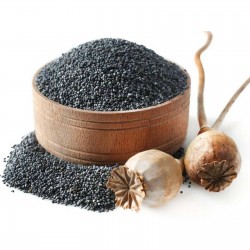
1000 to 10000 Seeds Op....
Price
€3.50
(SKU: MHS 139)
Seeds Gallery EU,
5/
5
<h2><strong><b>Opium Poppy<span style="font-size: 17.5px;"> </span></b>Seeds (Papaver Somniferum)</strong></h2>
<h2><span style="color: #ff0000;"><strong>Price for Package of 2000 (1g), 4000 (2g), 10000 (5g) seeds.</strong></span></h2>
<p>Papaver somniferum, the Opium poppy, is the species of plant from which opium and poppy seeds are derived. Opium is the source of many narcotics, including morphine (and its derivative heroin), thebaine, codeine, papaverine, and noscapine. The Latin botanical name means the "sleep-bringing poppy", referring to the sedative properties of some of these opiates.</p>
<p>The opium poppy is the only species of Papaveraceae that is an agricultural crop grown on a large scale. Other species, Papaver rhoeas and Papaver argemone, are important agricultural weeds, and may be mistaken for the crop.</p>
<p>It is also valuable for ornamental purposes, and has been known as the "common garden poppy", referencing all the group of poppy plants.</p>
<p>Poppy seeds of Papaver somniferum are an important food item and the source of poppyseed oil, a healthy edible oil that has many uses.</p>
<p><strong>Description</strong></p>
<p>Papaver somniferum is an annual herb growing to 100cm. All parts of the plant are strongly glaucous, giving a greyish-green appearance, and the stem and leaves are sparsely covered with coarse hairs. The leaves are lobed and clasp the stem at the base. The flowers are up to 120mm diameter, normally with four white, mauve or red petals, sometimes with dark markings at the base. The fruit is a hairless, rounded capsule topped with 12–18 radiating stigmatic rays. All parts of the plant exude white latex when wounded.</p>
<p><strong>History</strong></p>
<p>Use of the opium poppy predates written history. Images of opium poppies have been found in ancient Sumerian artifacts (circa 4000 BC). The making and use of opium was known to the ancient Minoans.[7] Its sap was later named opion by the ancient Greeks, from whence it gained its modern name of opium.</p>
<p>Opium was used for treating asthma, stomach illnesses, and bad eyesight.</p>
<p>The First and Second Opium Wars among China, the British Empire and France took place in the late 1830s through the early 1860s, when the Chinese attempted to stop western traders smuggling opium into their country.</p>
<p>Many modern writers, particularly in the 19th century, have written on the opium poppy and its effects, notably Thomas de Quincey in Confessions of an English Opium Eater</p>
<p>The French Romantic composer Hector Berlioz used opium for inspiration, subsequently producing his Symphonie Fantastique. In this work, a young artist overdoses on opium and experiences a series of visions of his unrequited love.</p>
<p>Opium poppies (flower and fruit) appear on the coat of arms of the Royal College of Anaesthetists.</p>
<p><strong><em>Legality</em></strong></p>
<p> Opium poppy cultivation in the United Kingdom does not require a license, but extracting opium for medicinal products does.</p>
<p> In Italy, it is forbidden to grow P. somniferum to extract the alkaloids, but small numbers of specimens can be grown without special permits for purely ornamental purposes.</p>
<p> Unlike in its neighbour countries Austria and Switzerland, where opium poppy is still cultivated legally, it has been delegalized in Western Germany after World War II, extending this regulation after German reunification in 1990 also to territories of former GDR, where opium poppy cultivation had remained legal until then.</p>
<p> In the United Arab Emirates, where the drug law is especially stern, at least one man was reported to have been imprisoned for possessing poppy seeds obtained from a bread roll.[9]</p>
<p> In New Zealand, section 9(4) of the Misuse of Drugs Act states, "It shall be a defence to a charge under subsection (1) [Cultivation of prohibited plants] if the person charged proves that the prohibited plant to which the charge relates was of the species Papaver somniferum, and that it was not intended to be a source of any controlled drug or that it was not being developed as a strain from which a controlled drug could be produced."</p>
<p> In northern Burma, opium bans have ended a century-old tradition of growing poppy. Between 20,000 and 30,000 ex-poppyfarmers left the Kokang region as a result of the ban in 2002.[11] People from the Wa region, where the ban was implemented in 2005, fled to areas where growing opium is still possible.</p>
<p> In the United States, opium is listed as a Schedule II controlled substance by the Drug Enforcement Administration. In addition, "Opium poppy and poppy straw" are also prohibited.[12] However, this is not typically enforced for poppies grown or sold for ornamental or food purposes.[4] Though the opium poppy is legal for culinary or æsthetic reasons, poppies were once grown as a cash crop by farmers in California; the law of poppy cultivation in the United States is somewhat ambiguous.</p>
<p>The reason for the ambiguity is because The Opium Poppy Control Act of 1942 (now repealed),[14][15][16] stated that any opium poppy should be declared illegal, even if the farmers were issued a state permit. § 3 of The Opium Poppy Control Act stated:</p>
<p> It shall be unlawful for any person who is not the holder of a license authorizing him to produce the opium poppy, duly issued to him by the Secretary of the Treasury in accordance with the provisions of this Act, to produce the opium poppy, or to permit the production of the opium poppy in or upon any place owned, occupied, used, or controlled by him.</p>
<p>This led to the Poppy Rebellion, and to the Narcotics Bureau arresting anyone planting opium poppies and forcing the destruction of poppy fields of anyone who defied the prohibition of poppy cultivation. Though the press of those days favored the Federal Bureau of Narcotics, the state of California supported the farmers who grew opium poppies for their seeds for uses in foods such as poppyseed muffins. Today, this area of law has remained vague and remains somewhat controversial in the United States. The Opium Poppy Control Act of 1942 was repealed on 27 October 1970.</p>
<p> The seeds themselves contain very small amounts of opiates,[4] and have no measurable narcotic effect in small quantities. See poppy tea. However, the television show MythBusters demonstrated that one could test positive for narcotics after consuming four poppy seed bagels. On the show Brainiac: Science Abuse, subjects tested positive after eating only two poppy seed bagels.</p>
<p><strong>Medicine</strong></p>
<p>Australia (Tasmania), Turkey and India are the major producers of poppy for medicinal purposes and poppy-based drugs, such as morphine or codeine.[23] The USA has a policy of sourcing 80% of its narcotic raw materials from the traditional producers, India and Turkey.[24]</p>
<p>A recent initiative to extend opium production for medicinal purposes called Poppy for Medicine was launched by The Senlis Council which proposes that Afghanistan could produce medicinal opium under a scheme similar to that operating in Turkey and India.[25] The Council proposes licensing poppy production in Afghanistan, within an integrated control system supported by the Afghan government and its international allies, to promote economic growth in the country, create vital drugs and combat poverty and the diversion of illegal opium to drug traffickers and terrorist elements. Interestingly, Senlis is on record advocating reintroduction of poppy into areas of Afghanistan, specifically Kunduz, which has been poppy free for some time.</p>
<p>The Senlis proposal is based in part on the assertion that there is an acute global shortage of opium poppy-based medicines some of which (morphine) are on the World Health Organisation's list of essential drugs as they are the most effective way of relieving severe pain. This assertion is contradicted by the International Narcotics Control Board (INCB), the "independent and quasi-judicial control organ monitoring the implementation of the United Nations drug control conventions". INCB reports that the supply of opiates is greatly in excess of demand.</p>
<p>In March 2010, researchers from the Department of Biological Sciences at the University of Calgary published an article in Nature Chemical Biology about their discovery of two enzymes and their encoding genes, thebaine 6-O-demethylase (T6ODM) and codeine O-demethylase (CODM), involved in morphine biosynthesis derived from the opium poppy.[27] The enzymes were identified as non-heme dioxygenases, and were isolated using functional genomics.[27] Codeine O-demethylase produces the enzyme that converts codeine into morphine.</p>
<p><strong>Medical cultivation in the UK</strong></p>
<p>In late 2006, the British government permitted the pharmaceutical company Macfarlan Smith (a Johnson Matthey company, FTSE 100) to cultivate opium poppies in England for medicinal reasons[29] after Macfarlan Smith's primary source, India, decided to increase the price of export opium latex. This move is well received by British farmers,[citation needed] with a major opium poppy field based in Didcot, England. As of 2012, they were growing in Dorset, Hampshire, Oxfordshire and Lincolnshire as a spring-sown breakcrop recognised under the single payment scheme farm subsidy.[30] The Office of Fair Trading has alerted the government to their monopoly position on growing in the UK and worldwide production of diamorphine and recommended consideration.[29] The governments response advocated the status quo, being concerned interference might cause the company to stop production.</p>
<p><strong>Use as food</strong></p>
<p>The opium poppy is the source of two food ingredients: poppy seed and poppyseed oil. The seeds contain very low levels of opiates,[4] and the oil extracted from them contains even less. Both the oil and the seed residue also have commercial uses.</p>
<p><strong>Poppy seeds</strong></p>
<p>Poppy seeds are commonly used in cuisine from many different cultures. They can be dry roasted and ground to be used in wet curry (curry paste) or dry curry. They have a creamy and nut-like flavor, and when used with ground coconut, the seeds provide a unique and flavour-rich curry base.</p>
<p><strong>Ornamental cultivation</strong></p>
<p>Once known as the "common garden poppy", live plants and seeds of the opium poppy are widely sold by seed companies and nurseries in most of the western world, including the United States. Poppies are sought after by gardeners for the vivid coloration of the blooms, the hardiness and reliability of the poppy plants, the exotic chocolate-vegetal fragrance note of some cultivars, and the ease of growing the plants from purchased flats of seedlings or by direct sowing of the seed. Poppy seed pods are also sold for dried flower arrangements.</p>
<p>Since "opium poppy and poppy straw" are listed in Schedule II of the United States' Controlled Substances Act, a DEA license may be required to grow poppies in ornamental or display gardens. In fact, the legal status of strictly ornamental poppy gardens is more nuanced, and destruction of ornamental poppy installations or prosecution of gardeners (except those caught extracting opium via capsule scarification or tea extraction) are virtually unheard of.[4] During the early spring, opium poppies can be seen flowering in gardens throughout North America and Europe, and beautiful displays are found in many private planters, as well as in public botanical and museum gardens (e.g., United States Botanical Garden, Missouri Botanical Garden, North Carolina Botanical Garden).</p>
<p>Many countries grow the plants, and some rely heavily on the commercial production of the drug as a major source of income. As an additional source of profit, the seeds of the same plants are sold for use in foods, so the cultivation of the plant is a significant source of income. This international trade in seeds of P. somniferum was addressed by a UN resolution "to fight the international trade in illicit opium poppy seeds" on 28 July 1998.</p>
<p><strong>Popular culture</strong></p>
<p>In the 19th century Thomas de Quincey wrote Confessions of an English Opium-Eater (1821). A book on Opium and allegedly the first book in the series of drug-addiction literature.</p>
<p>Recently, a feature film entitled The Opium Eater was released exploring the life of Eric Detzer and how he would go about acquiring opium poppies from flower shops and gardens in the Pacific Northwest (north of Seattle) to feed his addiction. This true story is based on an autobiography, Poppies: Odyssey of an Opium Eater written by Detzer, and starring David Bertelsen. Since the festival release of this film in Breckenridge, CO, eBay has stopped allowing the sale of opium poppy pods on their auction site. This may also be attributed to the death of a Colorado teen, who overdosed on opium tea around the same time.</p>
<p>What may be the most well known literary use of the poppy occurs both in L. Frank Baum's The Wonderful Wizard of Oz and in MGM's classic 1939 film based on the novel.</p>
<p>In the novel, while on their way to the Emerald City, Dorothy, the Scarecrow, the Tin Man, and the Cowardly Lion walk through a field of poppies, and both Dorothy and the Lion mysteriously fall asleep. The Scarecrow and the Tin Man, not being made of flesh and blood, are unaffected. They carry Dorothy to safety and place her on the ground beyond the poppy field. While they are considering how to help the Lion, a field mouse runs in front of them, fleeing a cougar. The Tin Man beheads the cougar with his axe, and the field mouse pledges her eternal gratitude. Being the Queen of the Field Mice, she gathers all her subjects together. The Tin Man cuts down several trees, and builds a wagon. The Lion is pushed onto it, and the mice pull the wagon safely out of the poppy field.</p>
<p>In the 1939 film, the sequence is considerably altered. The poppy field is conjured up by the Wicked Witch of the West, and it appears directly in front of the Emerald City, preventing the four travelers from reaching it. As in the novel, Dorothy and the Cowardly Lion fall asleep, but in a direct reversal of the book, the Scarecrow and the Tin Man are unable to carry Dorothy. Glinda, who has been watching over them, conjures up a snowfall which kills the poppies' narcotic power and enables Dorothy and the Lion to awaken. Unfortunately, the Tin Man has been weeping in despair, and the combination of his tears and the wet snow has caused him to rust. After he is oiled by Dorothy, the four skip happily toward the Emerald City.</p>
<p>In Baum's other Oz books, Oz's ruler, Princess Ozma, is often shown wearing poppies in her hair as decoration.</p>
<h2><a href="https://www.seeds-gallery.shop/en/home/1800000-fresh-seeds-1kg-organic-poppy-papaver-somniferum.html" target="_blank" title="Large packet of Poppy Seeds (1kg) can be bought HERE" rel="noreferrer noopener"><strong>Large packet of Poppy Seeds (1kg) can be bought HERE</strong></a></h2>
MHS 139 (1g)


Giant plant (with giant fruits)
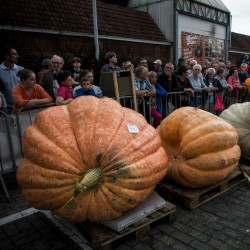
BIG MAX Pumpkin Heirloom Seeds
Price
€4.95
(SKU: VG 51)
Seeds Gallery EU,
5/
5
<meta http-equiv="Content-Type" content="text/html; charset=UTF-8" />
<h2><strong>BIG MAX Pumpkin Heirloom Seeds</strong></h2>
<h2><span style="color: #ff0000;"><strong>Price for Package of 4 seeds.</strong></span></h2>
<p>(C. maxima) 110 days Huge pumpkins can grow well over 50 kg - 100 lbs! Nearly round, bright orange fruit are stunning and are good for pies and canning. Very thick, orange flesh. Good for county fairs and displays.</p>
<p><strong>GARDIN HINTS:</strong> Let one or two pumpkins only develop per vine for largest size.</p>
VG 51 (4 S)


Giant plant (with giant fruits)
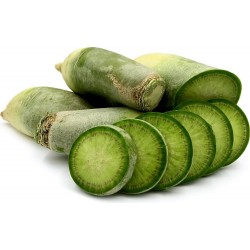
Chinese Green Luobo Radish...
Price
€2.45
(SKU: VE 98)
Seeds Gallery EU,
5/
5
<h2><strong>Chinese Green Luobo Radish Seeds</strong></h2>
<h2><span style="color:#f40707;"><strong>Price for Package of 20 seeds.</strong></span></h2>
<p><span>Green Meat radishes are easily distinguished by their shape and color. The swollen and elongated taproot is two-toned like several radish varieties, yet it is unique in its coloring. Its upper half near the stem end is lime green colored, and its tapered lower half is cream colored. It can be harvested when as small as five inches or as large as ten inches. Its thick skin covers a green to creamy white flesh which offers a crisp texture and a radish flavor that can vary from mild to hot depending upon growing conditions and maturity.</span></p>
<p><strong><span>Current Facts</span></strong></p>
<p><span>The Green Meat radish (Raphanus sativus) is an heirloom variety radish and a member of the Brassicaceae or Cruciferae family along with arugula, broccoli, and turnips. The entire plant is edible, roots and leaves. Green radishes such as the Green Meat can be found sold under a variety of different names including green skinned, tsingato green, Japanese minowase, and Chinense green luobo.</span></p>
<p><strong><span>Seasons/Availability</span></strong></p>
<p><span>The Green Meat radish is available in the spring and fall months.</span></p>
<p><strong><span>Nutritional Value</span></strong></p>
<p><span>Similar to red radishes, green radishes such as the Green Meat radish contain a significant amount of vitamin C, though less than their red relatives. Green type radishes are higher in carotenoids, proanthocyanidins, and chlorophylls than red varieties. The greens of the Green Meat radish additionally are high in nutrients, even more so than the radish root itself.</span></p>
<p><strong><span>Applications</span></strong></p>
<p><span>The spicy flavor and crisp texture of the Green Meat radish shines in fresh preparations. Slice thin and add to sandwiches, salads or wraps. Use to add a spicy accent to tacos, nachos, and Mexican soups. Slice lengthwise and pair with cream based dips or soft cheeses. Grate and serve as a condiment with sushi or sashimi or add to slaws to give them a spicy kick. In China Green Meat radishes are popularly pickled along with Sichuan peppers. Green Meat radish greens can be added to soups and stir-fries. To store, keep Green Meat radishes refrigerated and used within one to two weeks.</span></p>
<p><strong><span>Ethnic/Cultural Info</span></strong></p>
<p><span>In China, many radishes such as the Green Meat radish are used in traditional Chinese medicine, believed to promote health and wellness particularly related to the respiratory system. This is reflected in the ancient Chinese proverb which states, "Eating pungent radish and drinking hot tea, let the starved doctors beg on their knees." Radishes have long held such a high place of esteem in Chinese culture, the Quingdao Radish Festival dates back to the Ming Dynasty nearly 600 years ago and is an annual celebration of the radish and Chinese folklore which encourages eating radish on the ninth day of the lunar new year for good health.</span></p>
<p><strong><span>Geography/History</span></strong></p>
<p><span>The Green Meat radish is believed to be a relative of a traditional green Chinese radish native to northern China. Originally known by the name Chinese Green Luobo or Qingluobo these green radishes like many other Asian radishes such as the daikon are harvested at a larger size than European radishes. Green radishes are a popular variety in Asian countries and have just in recent years begun to gain in popularity in the United States. Like most radish varieties the Green Meat grows best in mild climates and is not heat tolerant.</span></p>
VE 98 (20 S)


This Product cannot be paid with PayPal or Card

Giant plant (with giant fruits)

Variety from Japan
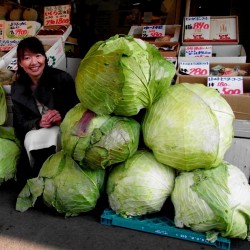
Japanese Giant Cabbage Seeds
Price
€2.65
(SKU: VE 222)
Seeds Gallery EU,
5/
5
<h2><strong>Japanese Giant Cabbage Seeds</strong></h2>
<h2><span style="color: #ff0000;"><strong>Price for Package of 20 seeds.</strong></span></h2>
<p><span>It is a gigantic Japanese cabbage, which grows to an enormous size. Interestingly, he does not need any more time than ordinary cabbage to reach that size.</span></p>
<p><span>Surely there will be vegetables in your garden that will attract passersby views.</span></p>
VE 222 (20 S)


Giant plant (with giant fruits)
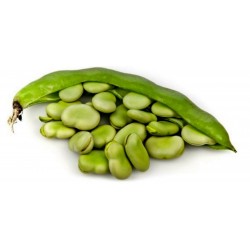
Fava Beans Seeds
Price
€2.55
(SKU: VE 162)
Seeds Gallery EU,
5/
5
<h2><strong>Broad Bean Aquadulce Fava Beans Seeds (Vicia faba)</strong></h2>
<h2><span style="color: #ff0000;" class=""><strong>Price for Package of 10 (16g) seeds. </strong></span></h2>
<div>Hardy Annual. Aquadulce is highly prolific and easy to grow, and yet remains one of the most delicious in terms of flavour and texture. It is a white seeded variety; with pods up to 23cm (9in) long, crops in 90 days with a height of 90 to 100cm (36 to 40in). They are an ideal variety for children to grow. This variety is universally recognised as being best hardy broad bean for an autumn sowing; it can be sown anytime from autumn until spring. It establishes itself very quickly and will produce a very early crop. We should, of course, all grow Broad Beans, as they are so much more delicious eaten young and just picked. When they're smaller than a thumbnail, you can even eat them raw. But it does take cooking - albeit just two minutes in lightly salted simmering water to bring out maximum sweetness. The first pick of the year, tossed with a slightly overindulgent knob of butter, is a high point of early summer.</div>
<div> </div>
<div>Broad Bean “Aquadulce” has been awarded the RHS Award of Garden Merit</div>
<div>It is also recommended by the River Cottage Handbook Veg Patch. </div>
<div> </div>
<div><strong>Sowing</strong></div>
<div>For the earliest crops sow from early autumn to late winter or sow in spring</div>
<div>Broad beans are best suited to a cool climate, and they only grow satisfactorily at temperatures below 15*C (60*F).</div>
<div>If sowing in the autumn, choose a sheltered position. The ideal soil is one which has been manured for a previous crop.</div>
<div> </div>
<div><strong>Direct sowing:</strong></div>
<div>Broad beans are traditionally sow in double rows 7cm (2in.) deep, 23cm (9in.) apart in the row.</div>
<div>The double rows should be spaced 23cm (9in.) apart and a distance of 40-60cm (18-24in.) should be left before the next set of double rows.</div>
<div>Plant seed 5cm deep. They should be planted or thinned to 20cm apart in staggered rows 30cm apart. Sow extra seeds at the end of the row for transplants. </div>
<div> </div>
<div><strong>Support</strong></div>
<div>As the beans get taller, you will need to provide extra support to your plants. A common mistake of the first-time gardener is not giving plants support ties that allow growing space. The haulm (stalk) of the broad bean plant is very brittle and easily broken, so the best way to support the plant is to construct a narrow box of stakes pegged in at 120cm intervals. Twist lengths of string from stake to stake to create a supporting frame that the bean plants can lean against when being blown around by the winter winds. Further levels of string can be added as the beans grow taller.</div>
<div> </div>
<div><strong>Care</strong></div>
<div>Once the pods start to form, ensure the beans are well watered around the base of the plant during dry periods. If the plants send out side shoots from the base, these should be cut off. At the end of cropping the plants should be removed from the soil. If the plants are left in the ground after their work is done, young sucker shoots can emerge which will exhaust the soil for follow-on crops.</div>
<div> </div>
<div><strong>Pinching out</strong></div>
<div>One of the gardening formalities with broad beans - undertaken when the flowers have just wilted to black, sooty curls and the first tiny pods are about to appear in their place - is to pinch out the little cluster of leaves at the top of the plant. This arrests further growth, directing the energy of the plant into the developing pods.</div>
<div>Don't discard these leafy bean tops - stir-fried in butter until lightly wilted, they are a delicious vegetable side dish in their own right - think of them as beany greens. They are also a fine filling for a tart or omelette.</div>
<div> </div>
<div><strong>Harvesting:</strong></div>
<div>8 to 10 weeks from spring sowing. Regular picking (ideally 2 or 3 times a week) will keep production going for about 4-6 weeks</div>
<div>For the best flavour, pick the beans when they are starting to show through the pod while the scar on the end of the beans is still white or green (although they can still be enjoyed after the scar has turned black). To remove the pods from the plant, give them a sharp twist in a downward direction.</div>
<div>With the last pick of the summer, the fat, bulging pods need a good 10 minutes boiling, after which the tender green kernels can be slipped out of their pale, leathery skins.</div>
<div> </div><script src="//cdn.public.n1ed.com/G3OMDFLT/widgets.js"></script>
VE 162 10 S





